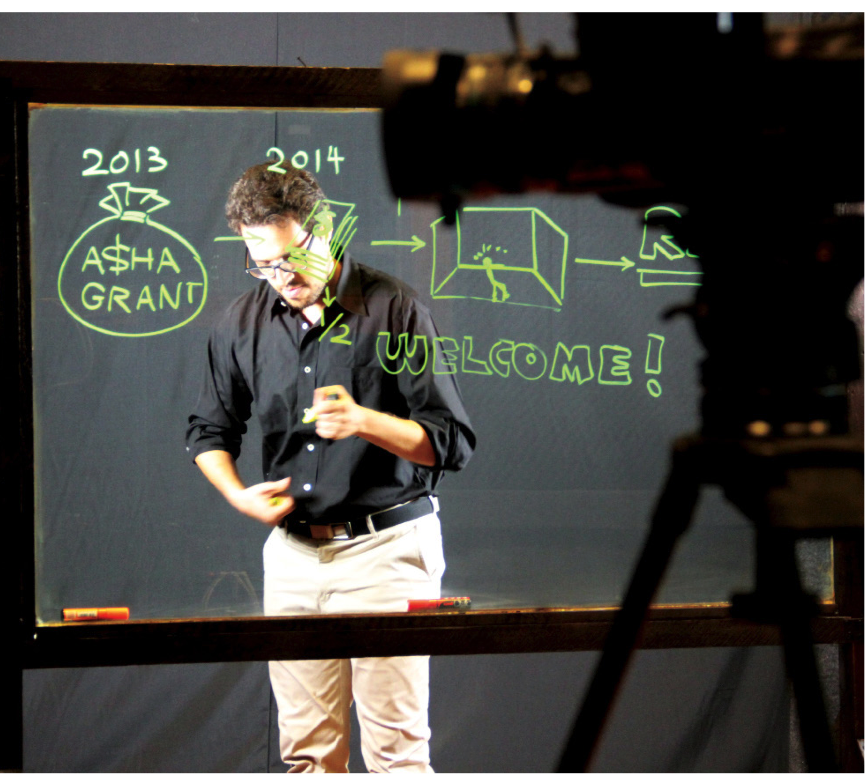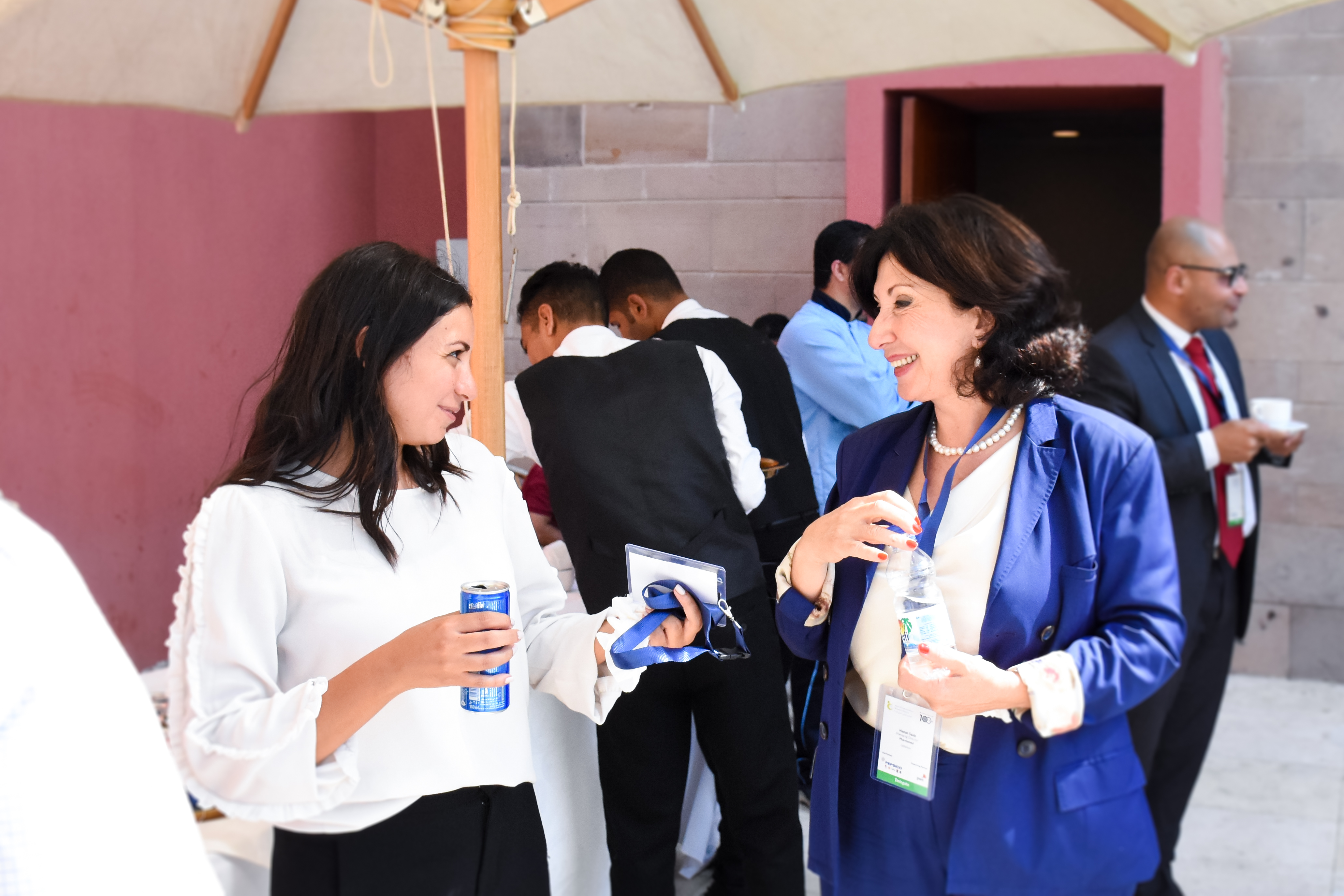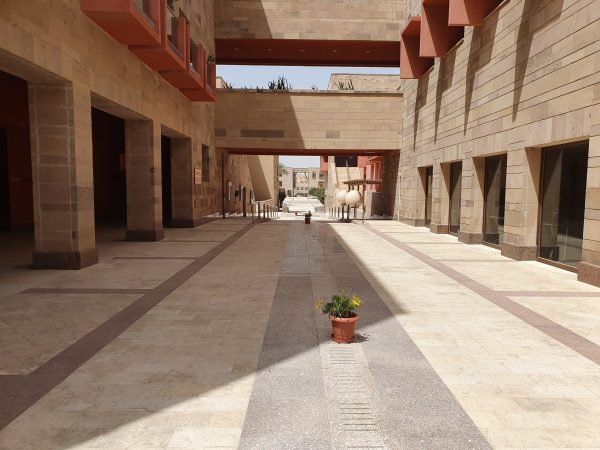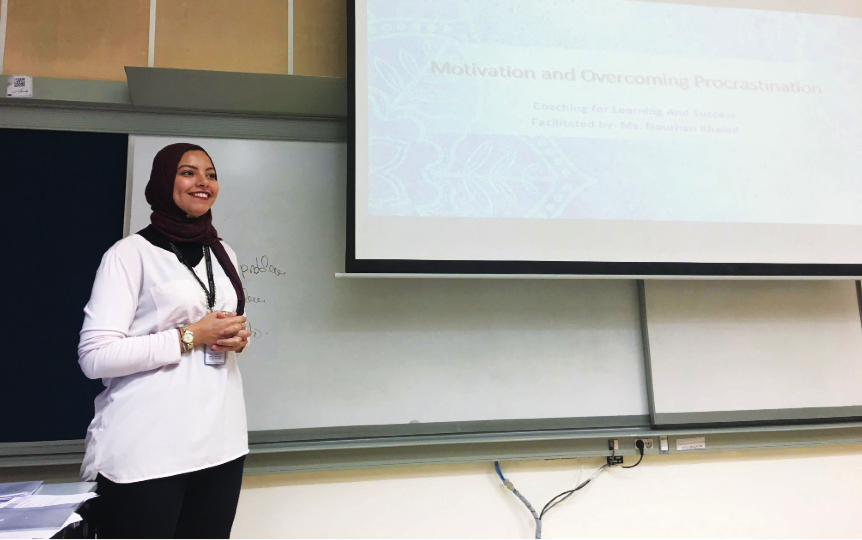CLT Launches a New Studio for Online Learning
The Center for Learning and Teaching (CLT) at AUC launched a new Film Studio in late September to support and expand online learning at the university.
CLT is trying to engage faculty and students to embrace the new academic approaches of blended, flipped, and fully online courses.
“Blended learning is when some of the content of [traditional] courses, or twenty percent of them, become online and students have to [physically] attend the class for the remaining material,”said CLT’s Manager of Instructional Multimedia Ahmad ElZorkani.
“It is a blend between both teaching styles.”
Blended learning training has been available at AUC for a number of years and CLT issues certificates after faculty complete workshops on the approach.
Fully online courses, on the other hand, are those which depend solely on online teaching.
Flipped courses are ones in which students are taught online and only come to class to practice what they have learned.
The studio was launched this semester and is open to any faculty member interested in developing their courses.
Faculty request to use the studio and then receive training and support from CLT staff on how to design and teach a blended course.
“We can record films, audios, podcasts, educational materials, learning modules which support the idea of digital education at AUC,” said Assistant Professor of Practice and CLT director.
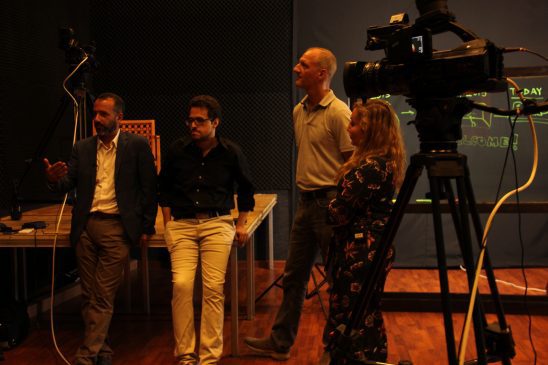
The studio has three cameras, two chroma backgrounds, a glass board and a raised floor for people who want to be seated as they film, in addition to one operator and one studio student technology assistant.
It’s equipped for filming, post-production editing, and creating graphics to cater to all needs.
“I teach blended learning classes on the graduate level and plan to do so for the undergraduate courses. The graduate students were very receptive to the idea,” said Associate Professor at the Journalism and Mass Communication Department Naila Hamdy.
Hamdy elaborated that she will be recording a series of short videos for undergraduate students and allow for class discussions on each of the topics explained via video.
“I believe that students will be receptive to this idea. This is the most effective online tool available for the past two years or so,” added Hamdy.
But students are not allowed to use this studio to film their individual projects; it is designed only for instructors who have received training.
The only exception in which students can use the studio is if the instructor asks for a specific number of students to attend the video-recording because he/she needs them to help.

